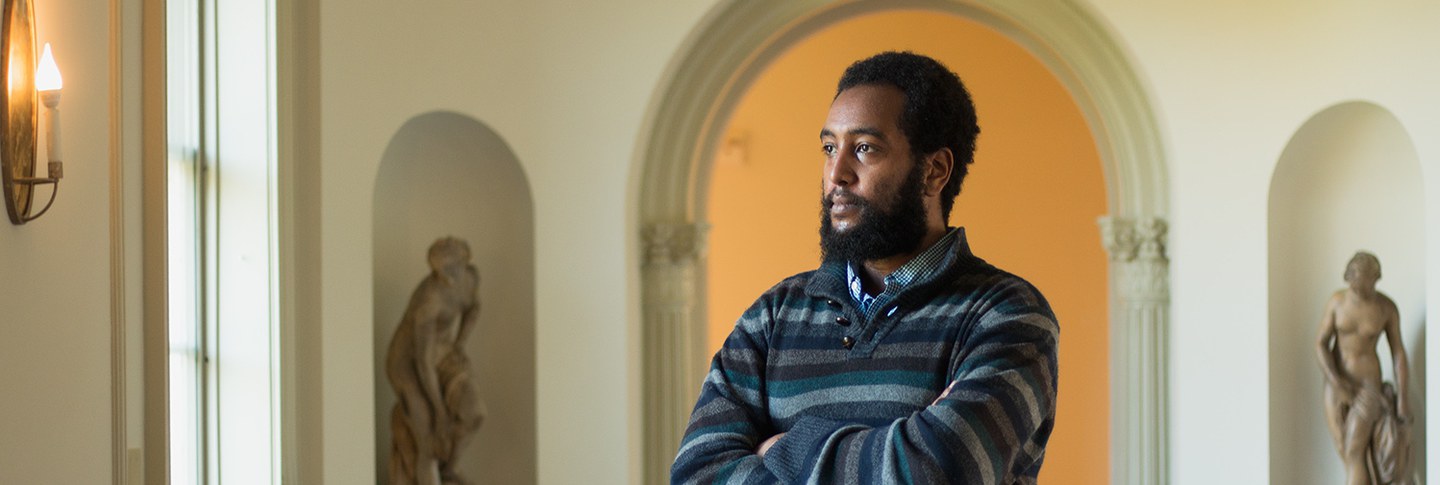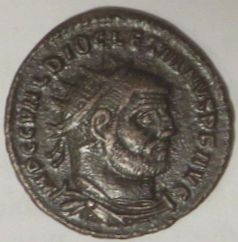I promised something more substantial and so here it is, a note about a paper of late May 2021 that is, I think, still interesting stuff. Two levels of background you need: first, that what with our seminar series at the University of Leeds being forced online like everything else we did in that time of pandemic, the then-Director of the Institute of Medieval Studies, Dr Alaric Hall, took the chance to broaden our reach a bit, both in terms of nationality of speakers and of topics of discussion, which is how on 25th May we were hearing from Dr Felege-Selam Solomon Yirga, then and now at the University of Tennessee, with the title, “The Chronicle of John of Nikiu”. Second, John of Nikiû—who?

There are basically no images of either John of Nikiû or of anything of his era left from his old city, so the fact that Dr Yirga has given a paper or two about him now means that he himself is the main response to image searches for John. So I thought, why not. Here is Dr Yirga at Dumbarton Oaks ahead of giving a different paper about John there the year before.
OK, you have possibly just heard of Bishop John of Nikiû if you studied the era of Islamic conquests for more than a week but otherwise chances are poor. Nikiû is in Egypt, and a history that John wrote, a universal history in good Church tradition (though which Church? coming to that) running from Adam to the arrival of Islam in Egypt, is one of the earliest sources we have for that latter event. Unfortunately, it also exists only in quite a late Ge’ez version of an Arabic translation of what was probably originally a Coptic text based on Greek sources, and we don’t have all of it.1 Phew. But better than nothing, am I right?
Now, Dr Yirga did his Ph. D. on John and his chronicle and so is better equipped to answer that question than most, and the way he chose to go about it was to say, let’s stop for a moment trying to work out what John was doing in his text about the events for which he is the immediate primary source, and see what he does with older events where we have some outside idea what happened and can thus work out his agenda. And that proves to be interesting, if not very conclusive.

There are several busts and statues supposedly of Diocletian, which show at least three clearly different men, so as is my wont, I’m going for an inarguably contemporary, if stereotypical, image of him, in the form of this billon nummus struck at Heraclea in 295-296 CE, which is in the University of Leeds Brotherton Library, Thackray Collection, olim CC/TH/ROM/IMP/812
The episode that Dr Yirga took for examination was the persecution of Christians under the Roman Emperor Diocletian, the only Roman emperor ever, I think, to retire and die peacefully at home.2 (Tetricus I might also count, but I digress.3) Naturally you would not expect Diocletian’s persecution to receive a neutral press in Christian sources written after the eventual victory of their religion in the empire, and indeed it usually does not, because apart from anything else it has historically been an excellent period in which to situate the careers of martyrs whose lives need, um, filling out for lack of information.4 But John went somewhere else with it. Firstly, he made Diocletian himself Egyptian; secondly, he originated the persecution in a rebellion against Diocletian in Alexandria, making the anti-Christian measures part of how Diocletian suppressed this rising in his homeland; then thirdly he gave him this Nebuchadnezzar-like divine madness and illness which sent him off to the West as a hated exile, from which he returned when cured but never to rule again. (Actually he just went on and off with the persecutions until his retirement and in most other respects is regarded as one of Rome’s great reformers and generally a success.4) Now, some of this has at least some connection, either to history as we currently reckon it or at least to sources John had: thus, though Diocletian was from the Balkans by birth, I believe, he did face a rebellion in Egypt in 284 by one Domitius Alexander (though there was nothing Christian about it as far as we know, but John’s spin is coming here partly from older chronicler John Malalas); and of course, from a point of view in Egypt he did head off to the West and stop ruling as a result, even if the causation John put in there was all his own.5 But mostly, not.
So where did this leave the search for agenda? This was where most of the questions went, because the answer seems to be: to understand this bit you have to know the rest of the text as well. An awful lot of its agenda elsewhere appears to be to defend Christian Orthdoxy as it was mostly seen from Coptic Alexandria (that is, the Maiophysite persuasion of Christianity) against the deviant creed of the wider Empire (what is usually called Chalcedonian Christianity, including modern Catholicism and Orthodoxy both). How either Diocletian or the Islamic conquests fitted into that for our chronicler thus became slowly less clear. Matters were complicated here by one of the other people who does, Philip Booth, turning up in the virtual audience and giving a short spontaneous response, which suggested apart from anything else that the whole thing might really be an older Greek chronicle given only a gloss and translation by John of Nikiû. Dr Yirga thought that the work was all John’s and his sources’, but that this gave him a very complex identity, whose general position was roughly to reject Chalcedon but really want the Empire back, and thus try to make Egypt, and Alexandrian Christianity, central to its history where possible. And I could buy that, though I’d need to, you know, read it to be sure. And this has definitely pushed John’s Chronicle up my reading list, just because overall it sounds considerably odder than I’d expected!
1. You can read it as John, Bishop of Nikiu, The Chronicle of John, Bishop of Nikiu, translated from Zotenberg’s Ethiopic Text, trans. R. H. Charles (London 1913), on the Internet Archive here.
2. There are many works on Diocletian and his colleagues, because one of the things he did was recruit trusted co-emperors, another thing of which he seems to have been uniquely capable until Constantine I succeeded one of them. Of those I’ve seen I’d recommend Roger Rees, Diocletian and the Tetrarchy, Debates and Documents in Ancient History (Edinburgh 2004), on JSTOR here, over most of the others.
3. There isn’t actually much on the Gallic Empire as a phenomenon, oddly, so you might have to start with John F. Drinkwater, The Gallic Empire: separatism and continuity in the northwestern provinces of the Roman Empire AD 260-74, Historia 52 (Stuttgart 1987).
4. For the normal representation of Diocletian in Christian sources, see Lactantius, De mortibus persecutorum, trans. J. L. Creed, Oxford Early Christian Texts (Oxford 1984). Nonetheless he has the reputation as a grand reformer with a true vision for the empire who may have saved it, if not from either of almost-caste-like restrictions on social mobility or hyper-inflation. See as samples of the new panegyric Stephen Williams, Diocletian and the Roman Recovery (London 1985); Bill Leadbetter, Galerius and the Will of Diocletian (London 2009); Alan Bowman, “Diocletian and the First Tetrarchy, A. D. 284-305” and Elio Lo Cascio, “The New State of Diocletian and Constantine: From the Tetrarchy to the Reunification of the Empire”, both in Alan Bowman, Averil Cameron & Peter Garnsey (eds), The Crisis of Empire, AD 193-337, The Cambridge Ancient History 12, 2nd edn. (Cambridge 2005), pp. 67–89 and 170–183; and as an answer to one of my sidewipes there, A. J. Boudewijn Sirks, “Did the Late Roman Government Try to Tie People to Their Profession or Status?” in Tyche – Contributions to Ancient History, Papyrology and Epigraphy Vol. 8 (Vienna 1993), pp. 159–175.
5. Malalas can be found (if you’re lucky) in John Malalas, The Chronicle of John Malalas: a Translation, transl. Elizabeth Jeffreys, Michael Jeffreys & Roger Scott, Byzantina Australiensia 4 (Melbourne 1986).

